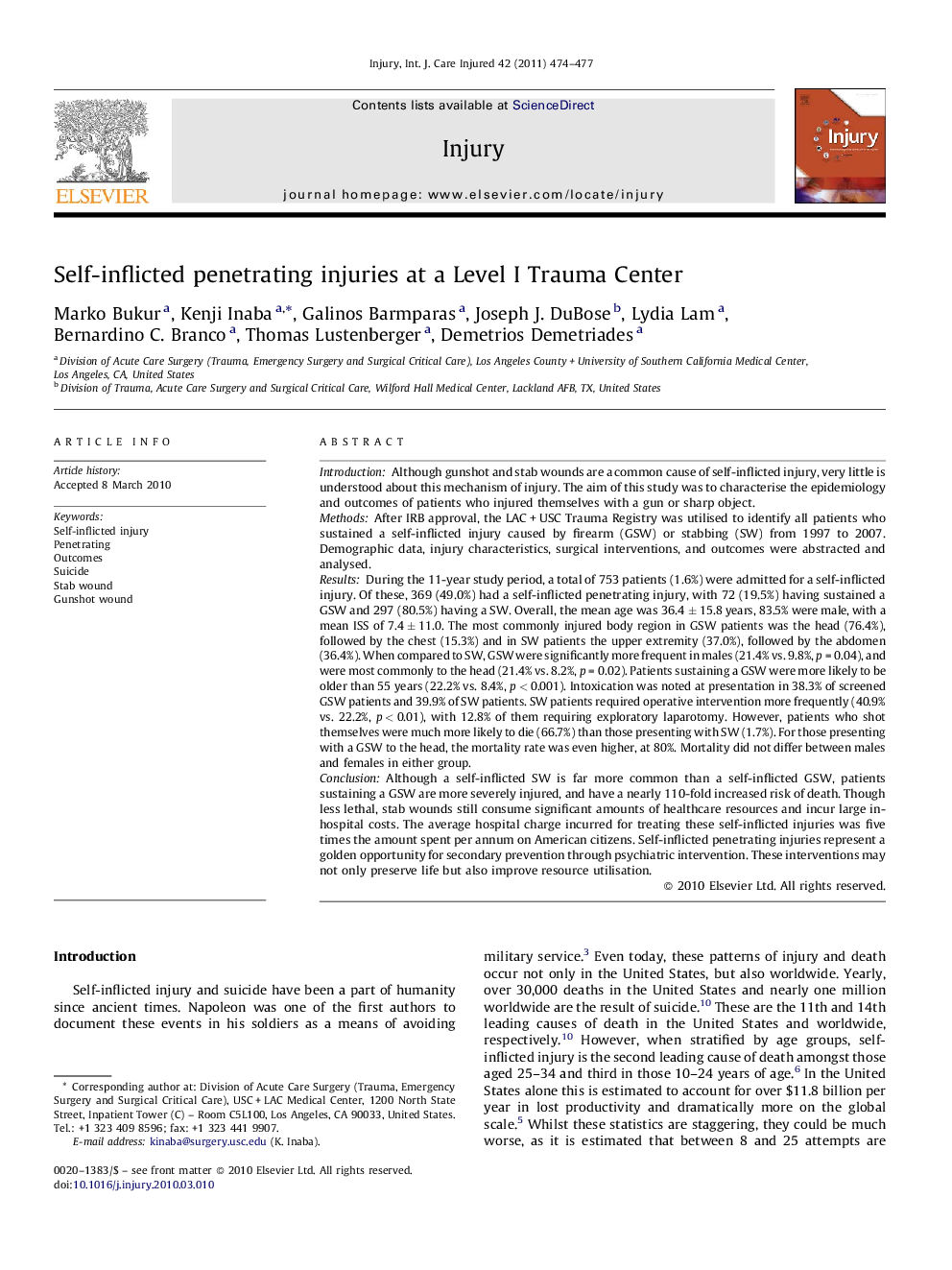| کد مقاله | کد نشریه | سال انتشار | مقاله انگلیسی | نسخه تمام متن |
|---|---|---|---|---|
| 3240141 | 1206033 | 2011 | 4 صفحه PDF | دانلود رایگان |

IntroductionAlthough gunshot and stab wounds are a common cause of self-inflicted injury, very little is understood about this mechanism of injury. The aim of this study was to characterise the epidemiology and outcomes of patients who injured themselves with a gun or sharp object.MethodsAfter IRB approval, the LAC + USC Trauma Registry was utilised to identify all patients who sustained a self-inflicted injury caused by firearm (GSW) or stabbing (SW) from 1997 to 2007. Demographic data, injury characteristics, surgical interventions, and outcomes were abstracted and analysed.ResultsDuring the 11-year study period, a total of 753 patients (1.6%) were admitted for a self-inflicted injury. Of these, 369 (49.0%) had a self-inflicted penetrating injury, with 72 (19.5%) having sustained a GSW and 297 (80.5%) having a SW. Overall, the mean age was 36.4 ± 15.8 years, 83.5% were male, with a mean ISS of 7.4 ± 11.0. The most commonly injured body region in GSW patients was the head (76.4%), followed by the chest (15.3%) and in SW patients the upper extremity (37.0%), followed by the abdomen (36.4%). When compared to SW, GSW were significantly more frequent in males (21.4% vs. 9.8%, p = 0.04), and were most commonly to the head (21.4% vs. 8.2%, p = 0.02). Patients sustaining a GSW were more likely to be older than 55 years (22.2% vs. 8.4%, p < 0.001). Intoxication was noted at presentation in 38.3% of screened GSW patients and 39.9% of SW patients. SW patients required operative intervention more frequently (40.9% vs. 22.2%, p < 0.01), with 12.8% of them requiring exploratory laparotomy. However, patients who shot themselves were much more likely to die (66.7%) than those presenting with SW (1.7%). For those presenting with a GSW to the head, the mortality rate was even higher, at 80%. Mortality did not differ between males and females in either group.ConclusionAlthough a self-inflicted SW is far more common than a self-inflicted GSW, patients sustaining a GSW are more severely injured, and have a nearly 110-fold increased risk of death. Though less lethal, stab wounds still consume significant amounts of healthcare resources and incur large in-hospital costs. The average hospital charge incurred for treating these self-inflicted injuries was five times the amount spent per annum on American citizens. Self-inflicted penetrating injuries represent a golden opportunity for secondary prevention through psychiatric intervention. These interventions may not only preserve life but also improve resource utilisation.
Journal: Injury - Volume 42, Issue 5, May 2011, Pages 474–477